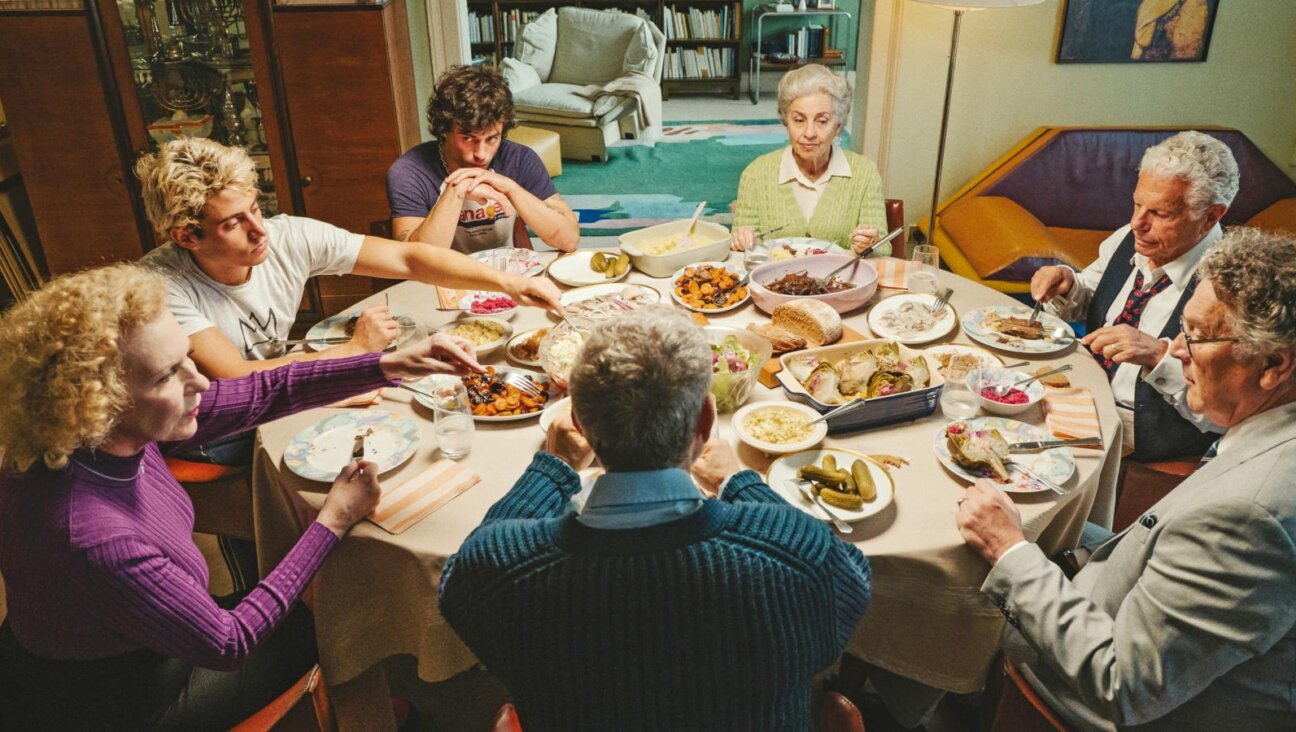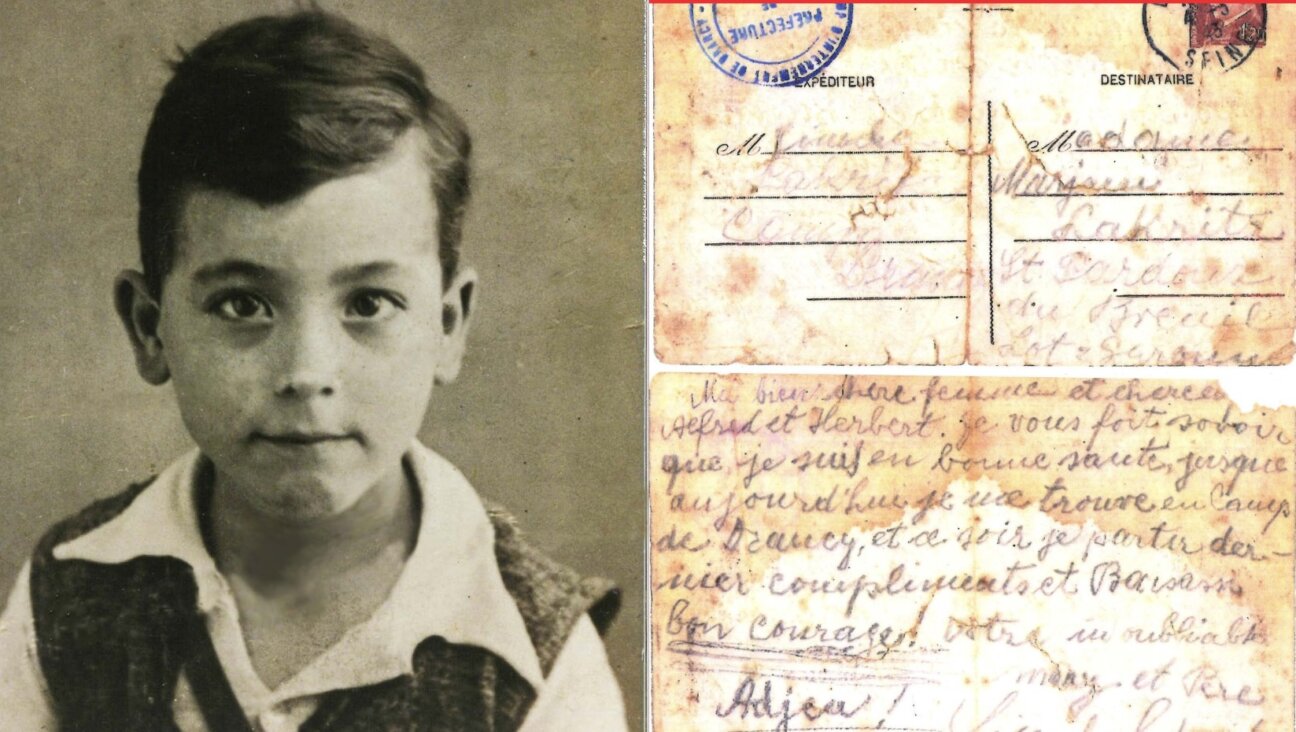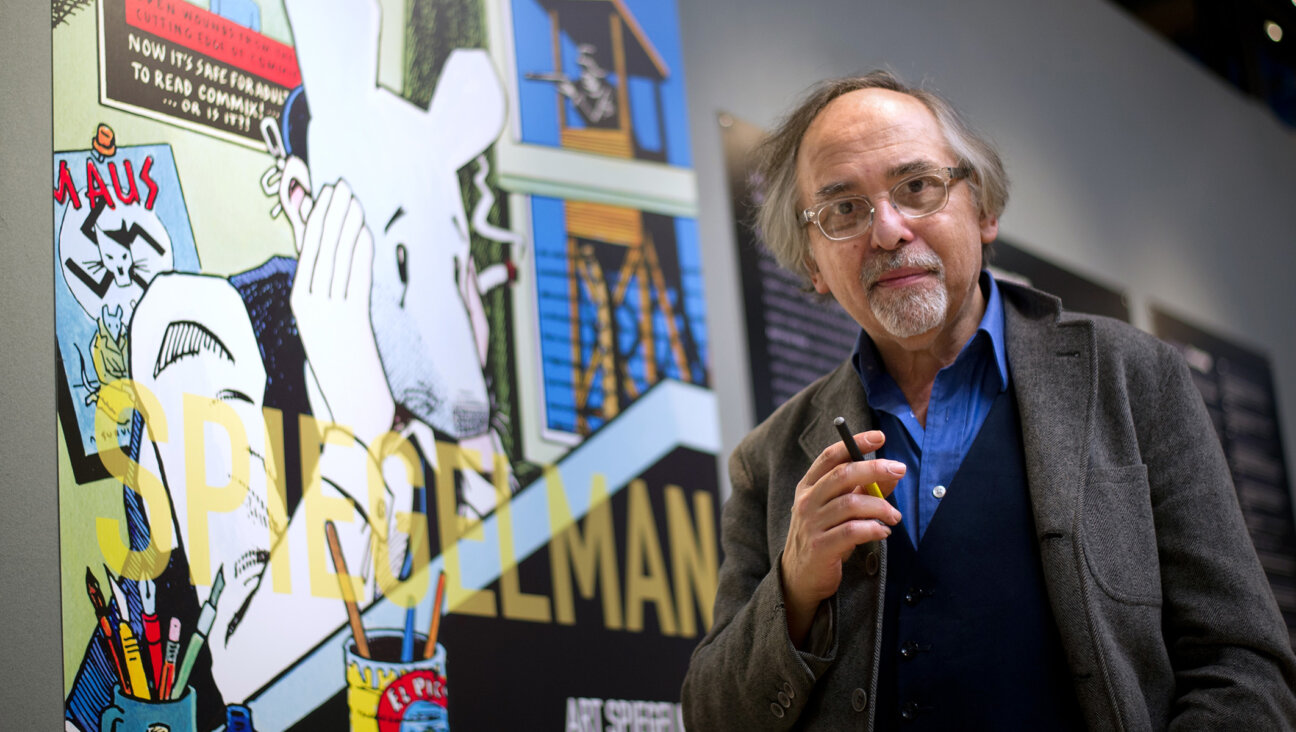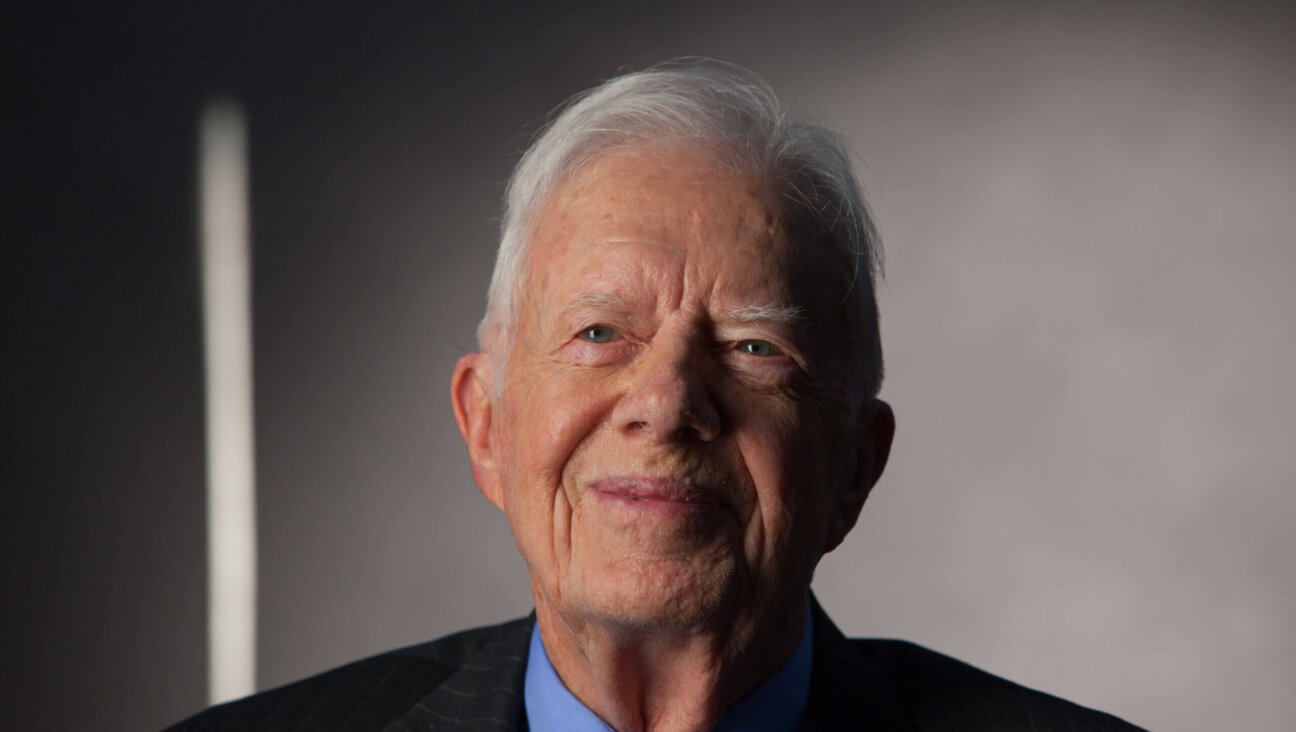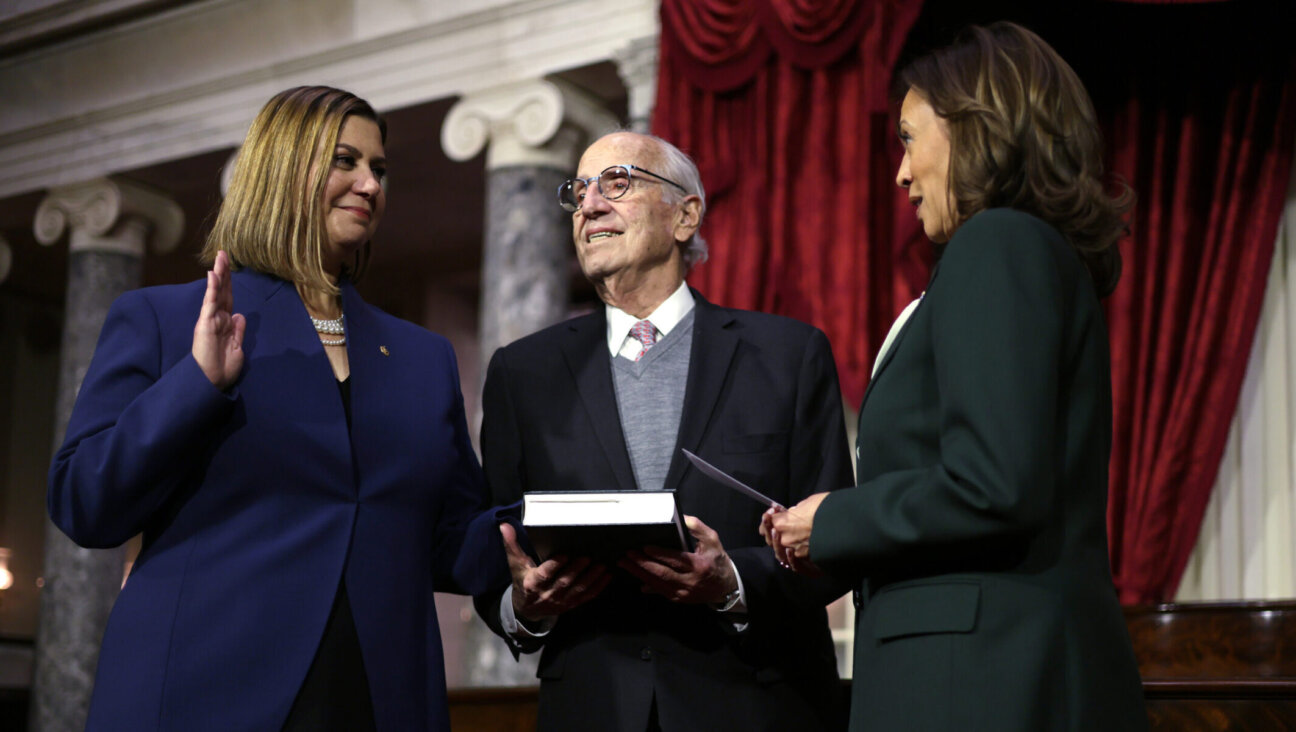Reviving the Flaming Tea Ceremony
For many Jews from Eastern Europe, holiday celebrations were bound up with sugar cubes and tea — and Hanukkah was no exception. In keeping with the custom of making it a “Festival of Lights,” many Russian Jews practiced what is known as the Flaming Tea Ceremony. Celebrants dip lumps of sugar in brandy onto teaspoons and stand in line; as each alcohol-soaked cube is set on fire, and the glow spreads, holiday songs are sung. Then, at once, each person drops his or her flaming cube into a waiting glass of tea, extinguishing the light.
In fact, the tradition of tea and sugar spreads beyond the holidays. Like many Eastern European Jewish immigrants, my parents drank their tea by sipping it from glasses through a piece of sugar held between the teeth. So I was a bit amused to find that in their fine new rendition of Dostoevsky’s “Crime and Punishment,” translators Richard Pevear and Larissa Volokhonsky deemed it necessary to provide a footnote to a passage describing a character as “sucking tea …’through the ‘sugar,’” explaining this practice to the rest of the English-speaking world. I was disturbed, however, that the footnote characterizes it as a “low-class or poor people’s way” of taking the beverage, designed to save sugar. I couldn’t speak for the other nations who indulged in the practice — Russians, Roumanians, Iranians, Kurds and Azerbaijanis, to name a few. But for Jews, at least, I imagined there was more to sipping tea through the sugar than bare economic necessity.
To be sure, necessity probably was the origin of invention. Jewish lore acknowledges that one’s tea-drinking style might depend on one’s fortunes. A Yiddish folk song asks, “How does the Tsar drink tea?” and answers, “You take a loaf of sugar, make a hole in it, pour in hot water, and mix and mix.” No cautious sipping through a cube for the rich and powerful. (The Tsar’s potatoes? According to the same song, shot from a cannon through a wall of butter, right into his mouth.)
On the other hand, for the truly impoverished, even an individual lump of sugar for sucking is an unattainable luxury. “We were so poor,” my Aunt Malka confided, “that we just hung a lump of sugar over the table and looked at it while we drank our plain tea.” I didn’t recognize this as hyperbole until years later, when I heard an Irish variant describing the dish of “potatoes and point,” in which diners eat their potatoes plain while pointing at a single piece of bacon suspended over the table.
But Jews have a special talent for making a virtue out of necessity –– especially since, in this case, the practice is a virtue in itself. Like so many other food ways born of scarcity, the taste trumps the more luxurious options. As Pushkin said, “Ecstasy is a glassful of tea and a piece of sugar in the mouth.”
Among Jews, however, the habit seems to been more than a matter of taste. It became an intrinsic part of Eastern European Jewish life, an embodiment of the culture, like the English afternoon tea, or the Japanese tea ceremony. Perhaps because tea was taken in rare moments of leisure that provided the occasion for reflection, perhaps because it often was a shared activity encouraging communication, it often served as a conduit for the explicit or implicit transmission of Jewish values.
There are countless stories and recollections of Jewish life in the old country or in immigrant America that include a scene of tea drinking, often with references to Jewish values imbibed along with the tea. Thus, for Alfred Kazin, in “A Walker in the City,” tea drinking on Friday nights in the Brownsville kitchen of his childhood was the occasion for spirited and convivial discussions of socialism by a young woman cousin and her friends, so the child concluded that “socialism would be one long Friday evening around the samovar.” Rachel Naomi Remen, in “My Grandfather’s Blessings,” recalls drinking tea in the afternoon with her observant grandfather, who took the occasion to transmit Jewish tradition ignored by her secular parents.
What specific lesson can the sugar cube convey? The late Joseph Murphy, a former chancellor of the City University of New York, once told a wonderful story about drinking tea through the sugar with his Yiddish-speaking maternal grandfather. (His name notwithstanding, Murphy spoke a beautiful Yiddish.) Wanting to emulate the older man, little Joseph, on his grandfather’s lap, asked for a piece of sugar. The grandfather invited him to share the piece held between his own teeth, and cautioned him to take no more than half. In this way, Murphy said, he was taught a lesson in tea drinking, a lesson in kissing and a lesson in yoysher (fairness), all at the same time.
So enmeshed in Jewish life is the sugar cube with tea that it has been addressed by religious authorities. The Orthodox Union’s Web site, in discussing what a man is permitted to ingest before davening Sabbath morning, cites one rabbinic authority that permits only light drinks such as water or unsweetened tea or coffee, with the noteworthy proviso that putting a sugar cube in the mouth is okay. The sugar cube can even be the stuff of wonder-working Hasidic rebbes. Haim Be’er’s novel “Feathers,” recently published in English translation, is set in Jerusalem in the 1950s and 1960s. One of the quixotic characters, Riklin, puzzles an onlooker by drinking a glass of tea while holding a sugar cube in his hand. “If you mean to use the sugar,” he is asked, “Why don’t you put it in your mouth?…. And if you don’t, why hold it in your hand?” Riklin explains that since he became a diabetic, he does this in emulation of Rabbi Shlomo, the Hasidic master of Karlin, who, when asked the same question, answered by giving his questioner the sugar to taste after he’d finished his tea. It had lost all its sweetness, and the rabbi gained a reputation for having the power of tasting sugar through his hands. Riklin declines to turn over his own sugar for tasting, leaving open the question of whether he shares this power.
So this Hanukkah, whether you take your tea flaming or a bit on the colder side, don’t forget the sugar.
Miriam Leberstein is a writer living in New York.
A message from our Publisher & CEO Rachel Fishman Feddersen

I hope you appreciated this article. Before you go, I’d like to ask you to please support the Forward’s award-winning, nonprofit journalism so that we can be prepared for whatever news 2025 brings.
At a time when other newsrooms are closing or cutting back, the Forward has removed its paywall and invested additional resources to report on the ground from Israel and around the U.S. on the impact of the war, rising antisemitism and polarized discourse.
Readers like you make it all possible. Support our work by becoming a Forward Member and connect with our journalism and your community.
— Rachel Fishman Feddersen, Publisher and CEO








